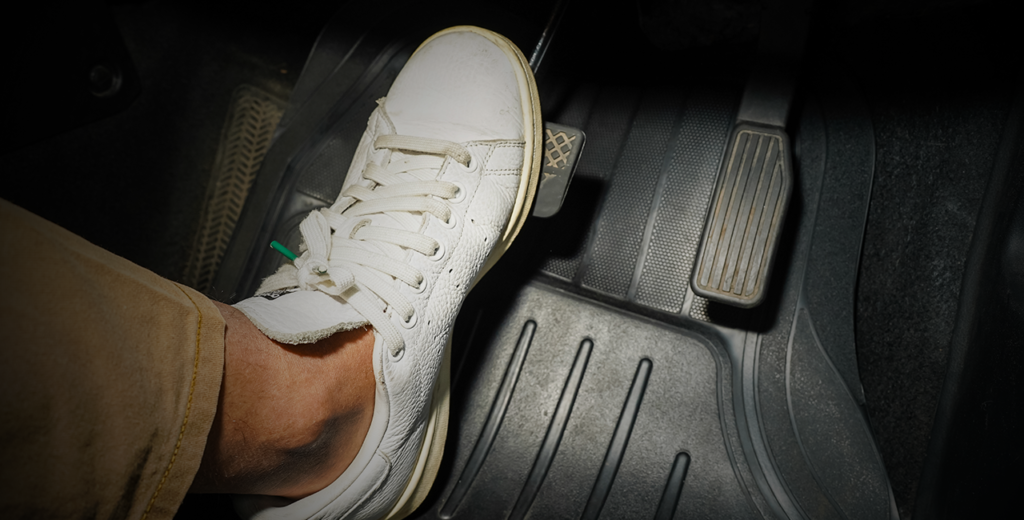Few things feel more frustrating or dangerous than trying to steer your car and realizing the steering wheel feels tight or hard to move. It’s a sign that something isn’t quite right under the hood. Often, this kind of problem points to steering system issues such as low power steering fluid, a faulty power steering pump, or problems with your suspension.
In this blog, we’ll break down the most common causes of hard steering in cars, how to fix them, and what you can do to prevent them from happening again. If you’re dealing with steering trouble, don’t ignore it. Getting your steering repair Houston early can help restore smooth handling and keep your car safe to drive.
Causes of a Hard to Turn Steering Wheel
A hard to turn steering wheel can make every drive stressful and unsafe. The reasons range from something as small as low tire pressure to more complex steering column or tie rod problems. When steering feels heavy or unresponsive, it’s often your car’s way of signaling that something in the steering system needs attention. Ignoring it can lead to bigger issues down the road or even make your vehicle harder to control in an emergency.
Most common causes:
- Low or Leaking Power Steering Fluid
- Failing Power Steering Pump
- Worn or Slipping Serpentine Belt
- Problems with the Steering Rack
- Electric Power Steering Problems
- Tire Pressure or Alignment Issues
Let’s take a closer look at each of these issues and what they mean for your vehicle.
- Low or Leaking Power Steering Fluid
The number one reason for a stiff or hard steering wheel is low power steering fluid. This hydraulic fluid helps create pressure that makes turning effortless. When fluid levels drop, you’ll feel low fluid steering resistance and the wheel becomes heavier, especially at low speeds.
You might also spot oily patches under your car or hear a squeal when turning the steering wheel, often a whining or squealing sound. These are common signs of steering system failure due to a leak. You can easily check power steering fluid levels at home, open the hood, find the reservoir, and ensure the fluid is between the minimum and maximum marks. If it’s low, refill with the recommended type and watch for leaks around hoses and seals. Low fluid can cause a stiff steering wheel, especially when driving at slow speeds or parking.
- Failing Power Steering Pump
A faulty power steering pump can make the steering wheel stiff when turning or feel jerky. This pump circulates fluid through your hydraulic power steering system, so if it starts to fail, the steering assist becomes weak.
Common symptoms of a bad power steering pump include whining noises, sluggish response, or difficulty turning at low speeds. Even big automakers face these problems. According to Reuters, in 2025, Tesla recalled nearly 376,000 vehicles in the United States due to a defect that could cause the power steering assist to fail, making the steering wheel harder to turn at low speeds.
That recall shows how critical the power steering system is for safe driving. If you experience these symptoms, don’t delay. A steering pump replacement may be necessary, and while steering pump replacement cost varies, fixing it early usually saves money compared to replacing the entire steering rack or steering column later.
- Worn or Slipping Serpentine Belt
Your power steering pump and alternator are driven by a serpentine belt, sometimes called a power steering belt. If this belt is worn, cracked, or misaligned, it can slip, causing a belt slipping steering issue and making the wheel difficult to turn.
You may hear a loud squealing noise during startup or while steering sharply. These are warning signs that the worn or misaligned belt needs attention. Regular vehicle maintenance checks can help catch these problems early. It’s generally smart to replace the serpentine belt every 50,000 to 60,000 miles or as recommended in your owner’s manual.
- Problems with the Steering Rack
The steering rack plays a central role in connecting your steering wheel to your tires. If it’s worn or leaking, the wheel may become stiff especially when the car is cold. This often points to internal wear, contamination, or steering rack seal damage.
Sometimes, drivers report that the wheel feels tight initially but loosens as the car warms up. That’s a classic sign of a steering rack issue. Because the steering rack is part of your vehicle’s core steering column assembly, it’s best to have a professional perform a steering calibration and inspection before the issue worsens.
- Electric Power Steering Problems
Modern vehicles often use electric power steering (EPS) instead of hydraulic systems. When EPS systems malfunction, you may notice the steering wheel difficult to move or intermittent loss of steering assist. Unlike hydraulic setups, EPS issues are often linked to electrical faults, steering sensors, or software errors.
If your dashboard shows a power steering warning light or you feel uneven steering resistance, it may be time for a steering system diagnostic. Trained technicians can check for electric power steering problems or recalibrate your system if needed.
- Tire Pressure or Alignment Issues
Not all car steering problems come from under the hood. Sometimes, the issue lies in your tires. Low tire pressure can make steering feel sluggish and heavy, especially at slow speeds or when parking. It’s one of the simplest car steering repair fixes — just refill your tires to the manufacturer’s recommended PSI.
Misaligned wheels can also cause your steering wheel to feel tight or pull in one direction. This often happens after hitting a curb or pothole. It’s also a good idea to familiarize yourself with the symptoms of bad wheel alignment, as catching the signs early can help prevent further steering and tire issues.
Keeping your tires properly inflated and scheduling regular alignments not only reduces steering wear but also improves fuel efficiency and ensures a smoother, safer drive.
How to Prevent Steering Problems?
The best way to avoid steering system issues is consistent vehicle maintenance. Make it a habit to check power steering fluid regularly and top it up as needed. Inspect your belts and hoses for cracks or wear and listen for unusual steering noises when turning.
Keep your tires properly inflated, check alignment twice a year, and don’t ignore early warning signs like squealing, vibration, or heavy steering. Proper power steering system maintenance helps prevent major car steering repair costs down the line.
Key Takeaways
- Check power steering fluid regularly.
- Inspect belts and hoses for wear or cracks.
- Keep tires inflated and wheels aligned.
- Listen for squeals or stiffness when turning.
- Regular maintenance prevents costly repairs and keeps steering smooth.
Restore Smooth Steering with Eric’s Car Care
A stiff steering wheel might seem like a small inconvenience, but it’s often an early sign of deeper steering system failure. The good news is most of these problems whether it’s low power steering fluid, a faulty pump, or a worn belt can be fixed quickly when caught early.
At Eric’s Car Care, we specialize in suspension and steering repairs, from electric power steering calibration to hydraulic power steering service. Book your appointment online or give us a call today. We make repairs hassle-free while your car is in our shop, we’ll arrange a free Uber to get you where you need to go and cover your ride back once your car is ready. Drive safe, stay confident, and enjoy steering that feels smooth, light, and reliable again.




